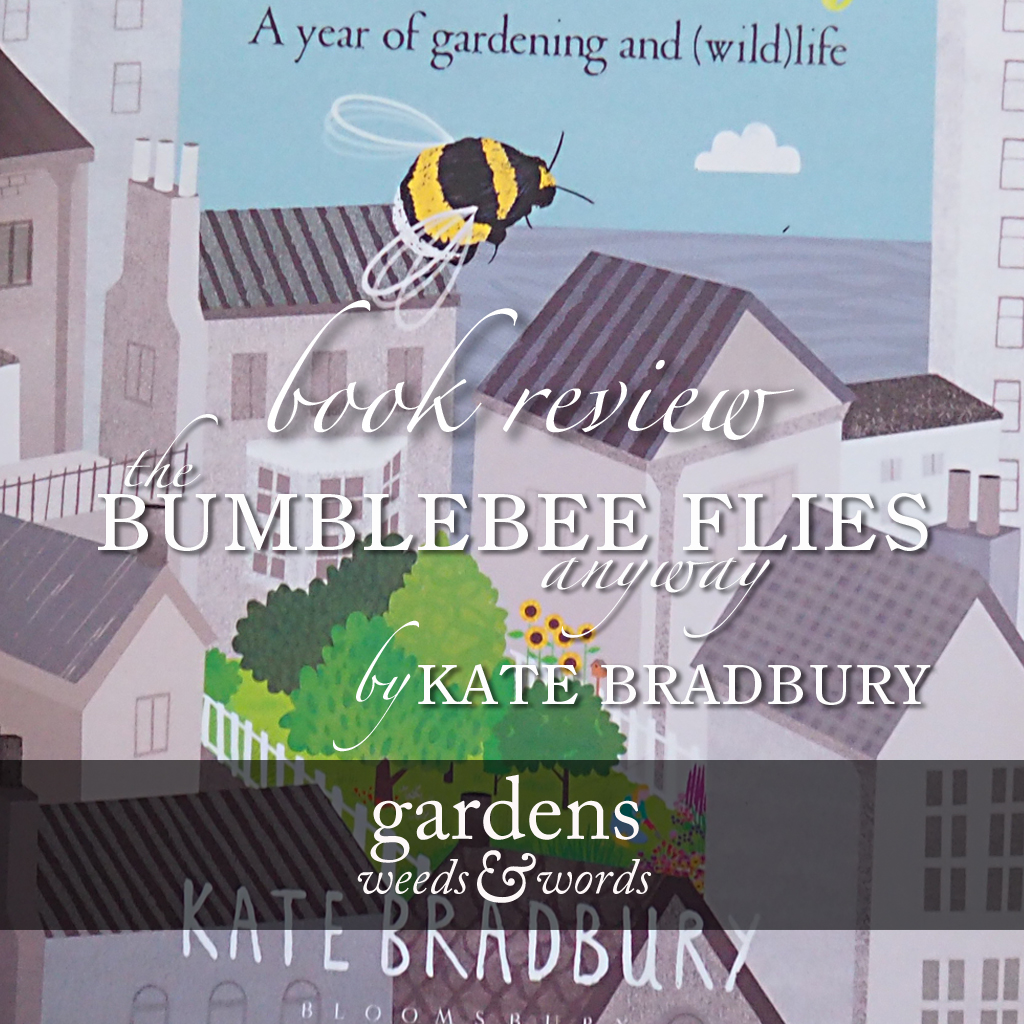by Kate Bradbury
Book review
This post contains affiliate links
My review copy of The Bumblebee Flies Anyway: a year of gardening and (wild)life took a while to reach me, but good things, as they say, come to those who wait. Barely have I begun reading the prologue and I’m slapping the table top, yelling “yes! YES!” like Meg Ryan in a Nora Ephron movie. Only hairier. And without such ghastly clothes.
This is a state of affairs that continues for all 240 odd pages, though I manage to restrain my ecstatic outbursts after a chapter or two. Why, I wonder now, should I react with such enthusiasm, to a book which, after all, is more cautionary tale than joyful celebration? It presents the most complete articulation of a feeling I’ve had for a long time now – that we’re doing our damnedest to build nature out of our towns and cities, that our decision-makers seem not to give a crapola and that, due to being so far removed from the flora and fauna that would have been commonplace a few decades ago, we don’t even know what we’re losing.
A bumblebee lands on the wall, stops a while, combs the hairs of her thorax with her little brush legs...I wonder where her nest is. An abandoned garden maybe, a bit of brownfield land, an allotment. Perhaps celebrated in a well-tended and loved garden – we’ve bot bees! Yes! I hope so. Red-tails can nest in walls, under sheds, in old mouse holes, an old duvet thrown out into the yard. If you build it they will come, if you don’t they may come anyway.
But it would matter hugely if we gave them a helping hand. If we stop razing gardens and paving them over, drowning what’s left with poison and suspicion. What could this land become if we just let things be?
It’s kind of Big Yellow Taxi in a book, including the weirdly personal third verse, except in the case of Bumblebee the autobiographical details are rather less jarring. And, as gloomy as that might sound, it’s good to find people who see things the way you do, when the world is busy looking the other way.
But I’m getting carried away – I knew I would. So, let’s start at the beginning.
This is not a coffee table book, nor a how-to-garden affair you can dip in and out of. It’s a start at the front and read through to the back job and, as such, I’m not going to focus over long on the physical object. My copy is a perfectly serviceable, slightly-larger-than-A5 hardback with fetching, plain yellow cover boards lurking beneath the cheerily illustrated dust jacket. But it would make little difference to your experience were you to read it in this form, as a paperback or on your Kindle.
A story about a garden rescued form the tyranny of decking boards and neglect, of a gardener attempting to reconcile her affinity for wildlife with a world of systems which seem indifferent, if not actively hostile to a natural world in danger of being lost forever. In places it seems like a lament for the diversity of the flower- and insect-rich world our parents and grandparents would have moved through as children. On other occasions, it comes across variously as a hymn, a prayer – even a howl of pain. The gentle prose belies a visceral connection to the subject matter, quite literally in the case of an encounter between an unfortunate frog and a lawn mower, which serves pretty well as an overarching metaphor.
It’s a nature memoir, so there’s autobiography too, chronicling Kate’s courageous habit of rescuing bumblebee nests while wearing only a t-shirt and shorts, memories (tricksy ones, at that) of her childhood garden, and an account of her mother’s illness, throughout the course of which she commutes from Brighton to Birmingham and back, consuming the motorway miles while in her garden the sparrows and the frogs and the critters get on with things, appreciative of the newly hospitable space linking her neighbours’ gardens upon either side, but indifferent to human concerns. The bumblebee flies anyway.
This is a moving, beautifully written tale, which somehow manages to be at once raw and passionate, quiet and understated. I think you should read it.
The Bumblebee Flies Anyway: a year of gardening and (wild)life, by Kate Bradbury, is published by Bloomsbury and is available from all good bookshops, and probably a few ropey ones too. You can buy it on Amazon here, or better yet, why not pop into your local indy bookstore and place an order?
I’ll be talking to Kate on an upcoming episode of the Gardens, weeds & words podcast, so do subscribe below to make sure you get to hear our chat as soon as it’s released.
If you’d like to receive blog posts in your inbox as soon as they are published, enter your email in the box below to be added to the Gardens, weeds & words mailing list.
Hello! I’m Andrew, gardener, writer, photographer, and owner of a too-loud laugh, and I’m so pleased you’ve found your way to Gardens, weeds & words. You can read a more in-depth profile of me on the About page, or by clicking this image.



